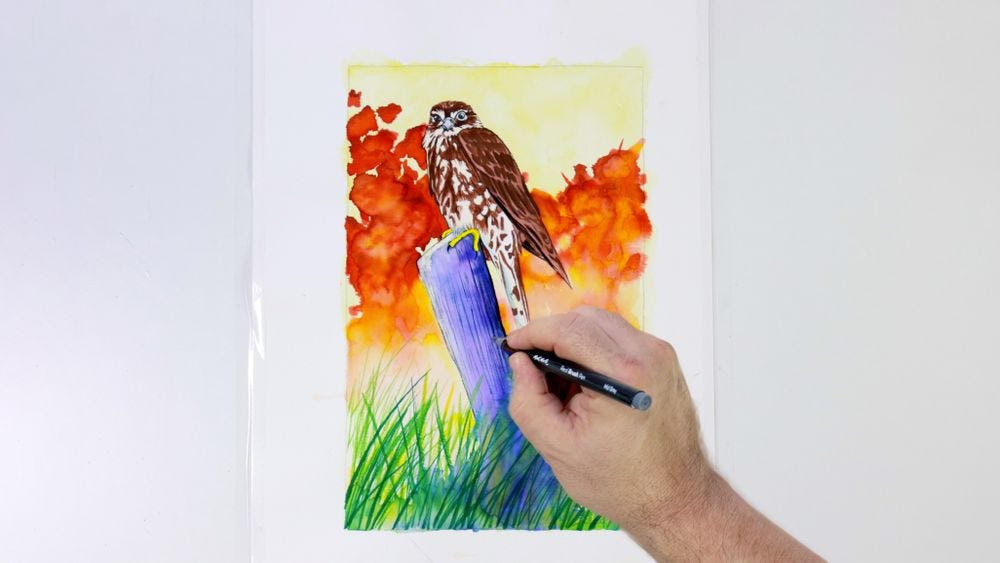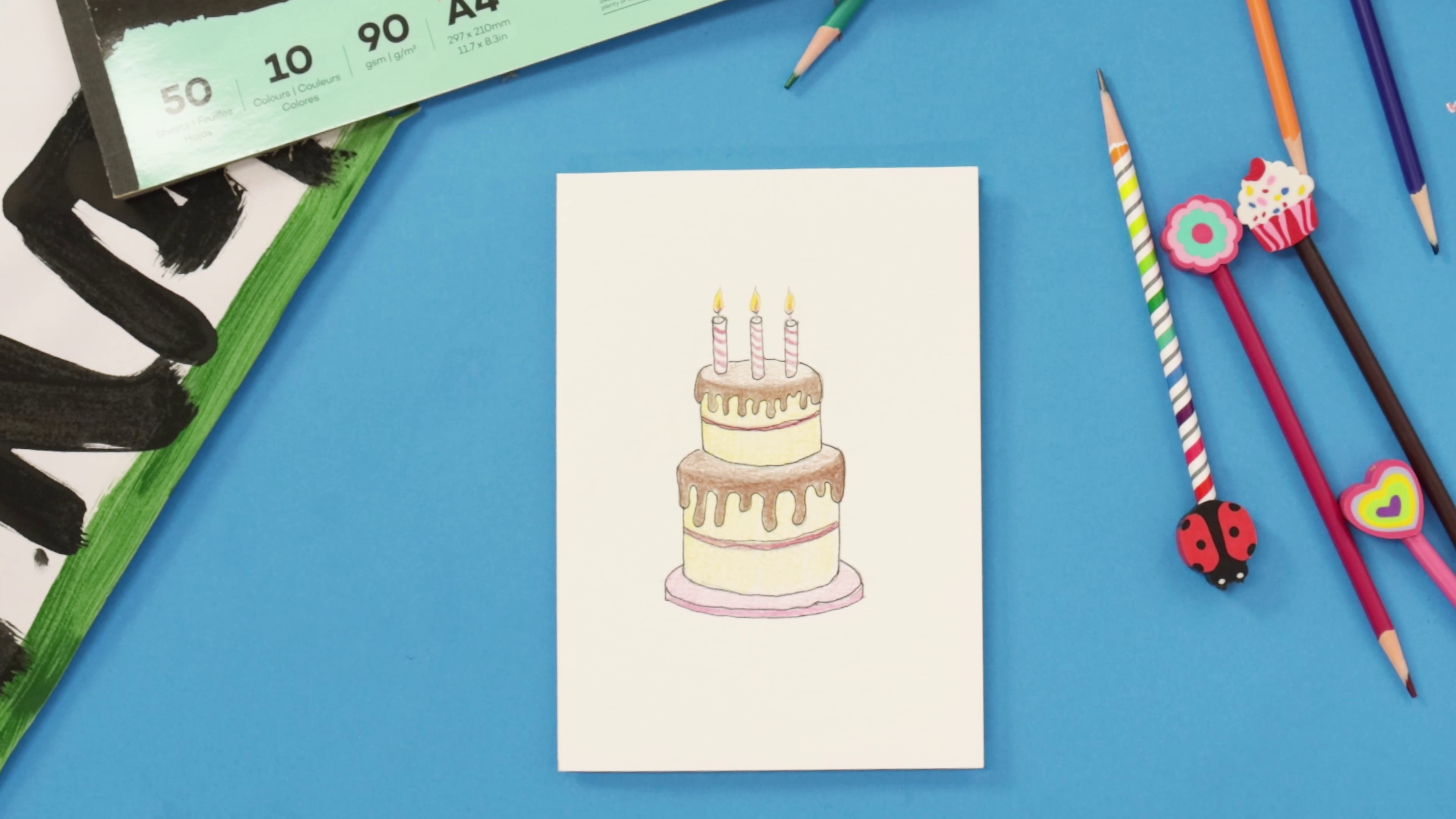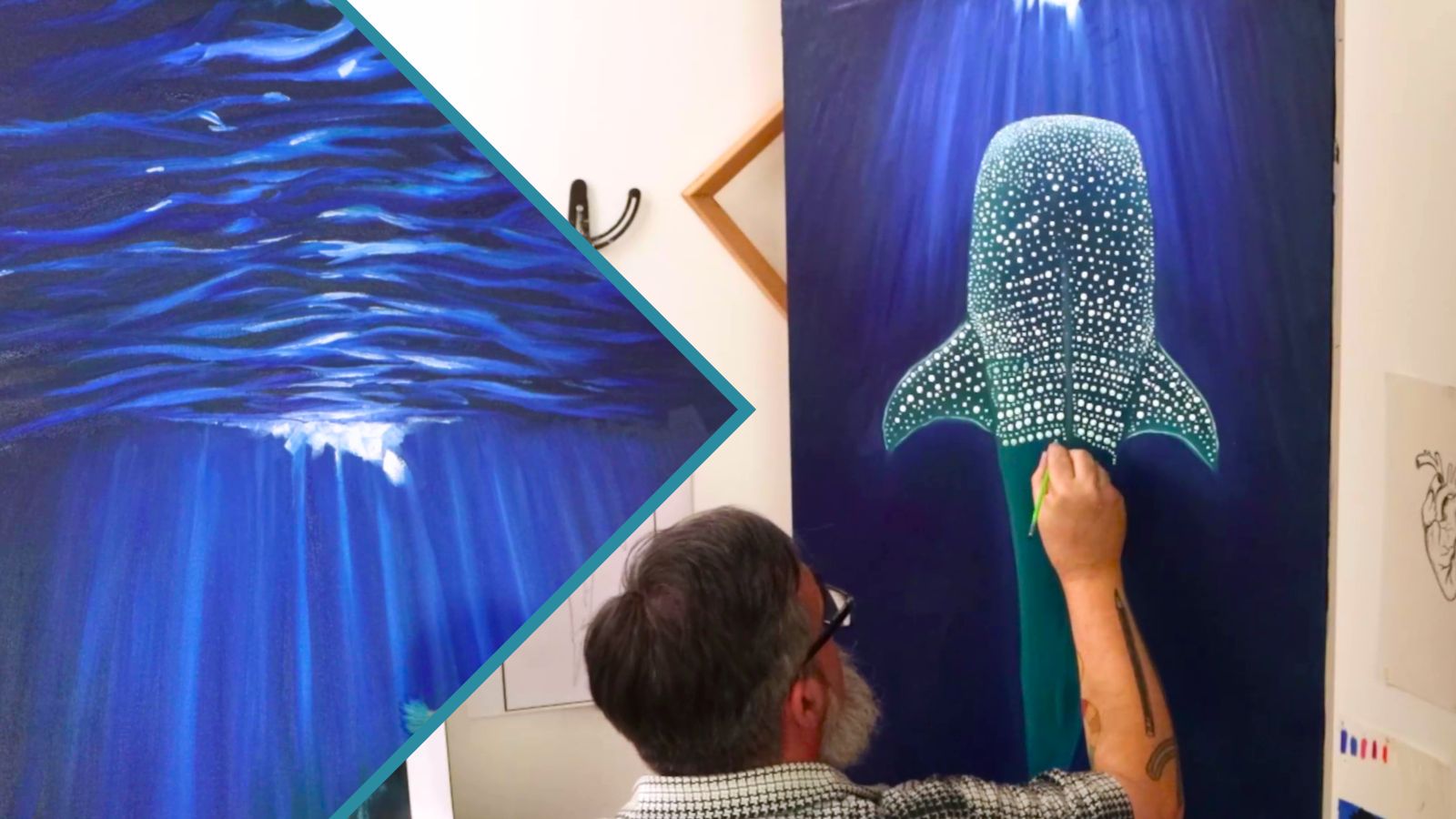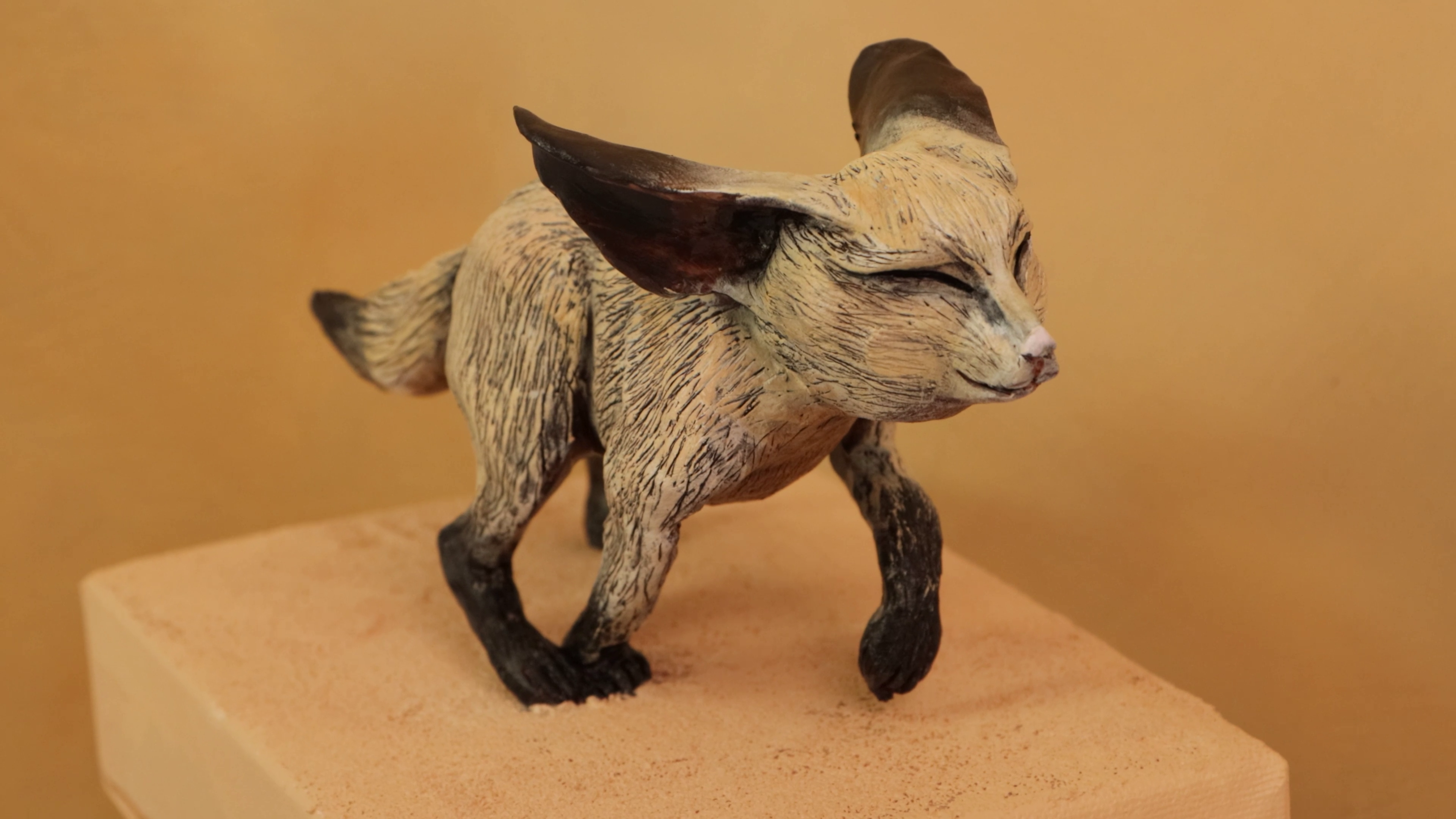
Draw a Bird with Real Brush Pens
Testing out different ways to create? Try painting with brush markers. Follow along and draw a snapshot of nature with our Real Brush Pens. Check out the lesson and materials list down below!
1. Transferring the outline
Print the outline to A3 sizing. Shade the backside of the print out with a pencil. Once it’s all shaded flip it over and lay it shaded side down, tape it on to a sheet of 300gsm cotton watercolour paper, and retrace all of the line work.
Once you have finished the retracing there may be some areas that need to be refined. If there is, you can refer to the printout and lightly redraw or define any of these areas.
Tip: When working with any pen or sets, it’s a great idea to create a colour chart so you can see how the colours actually look when used. Do this on the same paper you intend to use in your final artwork.
2. Begin the background
Use Cadmium Yellow to begin painting the background. For this, lightly paint the colour over the background. Once the colour is on, use that mop brush to dissolve the colour onto the paper.
Once the pigment is activated drag it down the page so it is lighter the closer you get to the bottom.
While the page is still damp, wash Scarlet into the background. When the paper is damp the colour goes on in a diffused way and you get softer edges.
To create interesting patterning within the coat, drop water directly onto the page. Allow this to dry, and then apply more Scarlet over it. The colour will be much stronger when the paper is dry. To give some richness to the tone add Cadmium Yellow over the area.
Tip: Real brush pens are very versatile and while they can be used on their own, you can also dissolve the pigment with water for beautiful watercolour effects.
3. Creating the bird’s perch
Apply some Light Grey over the area, then add Ultramarine and Violet into it. Take the colour in to the foreground also. Water is then applied so that the colours blend.
Tip: Like water colours, it is best to move from light colours to darker ones or move down the tonal scale.
4. Adding grass
While this area is still damp, add Light Green and Sap Green strokes over the area so that they sort of blend into the areas that are damp. This will suggest long grass. Allow this area to dry.
Reapply these greens and yellow over the previous grass area.
5. Painting the merlin bird
Dip the brush into water then into some Yellow and Sienna and lay a very light wash over the bird and allow this to dry.
To paint the merlin’s markings, use Red Ochre and start with the head and follow the direction of how the feathers would naturally lie. Once the head is complete paint in the plumage down the birds belly. Refer to the second print out for colour reference and leave the light areas of the plumage free of colour.
The feet can be painted in with Cadmium Yellow.
The beak of the bird is a light grey/sky blue. To get a very light tone with brush markers you can dip the tip of the brush pen into water and apply this to the desired area.
6. Detailing the bird
Once the body is finished the wing is painted in with Red Ochre and then water is painted over the area. Dab with a paper towel to lighten the whole area. This is then allowed to dry.
Red Ochre is then applied to the wing area in a series of broad strokes to suggest feathers.
We can then go in with Sienna over the bird to darken it in the appropriate areas. Black can be laid into any areas of deep shadow and the tip can be used to add any fine detail lines on the post to suggest the grain of the timber.
The eyes in any art work carry a lot of weight, and it’s a good idea to lay any of this precise work in with a fine tip marker. Don’t cover the entire eye here as there would be a highlighted shine over each eye.
Material List
- Real Brush Pens Premium 24pc
- Cotton Watercolour Paper Premium 300gsm A3 (16.5 x 11.7in) 5 Sheets







